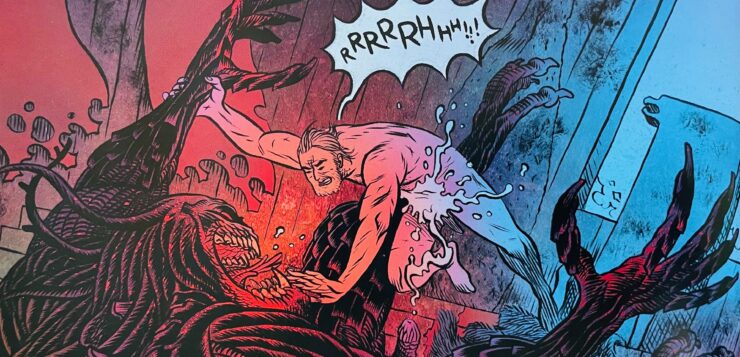 EROTIC MEDIEVALISMS
EROTIC MEDIEVALISMS
Medieval Pleasures Empowering Marginalized People
by Elan Justice Pavlinich
Routledge. 175 pages, $160.
NO ORAL SEX! No anal sex! No nude sex! No sex during daylight hours! No sex on Wednesday, Friday, Saturday, or Sunday! Sex during Lent, Advent, or Easter week is sinful! People in medieval Europe would have contended with countless restrictions on sexual activities to follow the teachings of the Catholic Church. A flowchart of unacceptable sex acts (summarizing medieval penitential manuals) is so complex that even the horniest of men would lose his erection if consulting it to avoid sin.
According to sex-averse Catholic doctrine, intercourse (in the missionary position) was permitted between a married man and woman only. Minimal enjoyment was allowed—many medical experts believed female infertility might be due to a lack of pleasure—but the goal was procreation. There were further taboos related to the Church calendar, female cycles, and bodily hygiene. Since the Church considered all sex outside these limits to be “lecherie,” or lust, I have to conclude that the vast majority of medieval adults were regularly engaging in sinful, perverse acts throughout their lives. (That would probably include many avowedly celibate clergy.)
Some of the most familiar examples of medieval eros are of the chivalrous type: Arthurian legends, Lancelot and Guinevere, courtly love, etc. These fin’amor (fine love) poems idealize longing, separation, and sex postponed. In psychoanalytic terms, these self-restraints of civility are an index of “secondary process,” as opposed to the bestial, immediate gratification of “primary process.” The literature representing that lusty, uncivil gratification is perhaps better known to scholars than to general readers: bawdy poems and farces. Elan Justice Pavlinich’s Erotic Medievalisms: Medieval Pleasures Empowering Marginalized People explores the range of medieval English literature as well as modern cultural phenomena finding inspiration in the Middle Ages. These “medievalisms”—from pop culture to poetry to BDSM sexual practices—draw upon a variety of fantasies, mythology, and even scholarship of the Middle Ages. Pavlinich’s monograph, a delightfully readable and theoretically savvy work of queer studies, presents Old English quotations followed by modern translations. He effortlessly slides back and forth between academic queer readings of medieval texts and a medievalist’s interpretations of contemporary ones.
“Medievalism” is a useful concept denoting the fancies of post-medieval people based on the culture of the Middle Ages. He points out how “Middle Ages” or “Dark Ages” or the “Enlightenment” are all labels created by later historians. All conceptions of past eras are the imagined recreations by historians inescapably influenced by contemporary cultural and political concerns. Scholarship of the past half-century has been enriched by historians “recovering” the history of women, non-elite, non-white, and queer people, whether through discovering neglected documents or simply reading canonical ones for topics that had been overlooked. Pavlinich’s thesis is as politically trenchant as it is precise: “erotic medievalisms employ sexualities to challenge traditional hierarchies and reclaim the medieval past for those who have been erased from historical narratives, excluded from popular representations, and marginalized by systemic oppression.” He is adept at highlighting the white, heteronormative bias of past and present literatures, cultures, and scholarship. (I would quibble with the last point. Feminist, queer, postcolonial medieval scholarship has burgeoned in the past decades, and colleagues in the field tell me that Medieval Studies conferences aren’t monopolized by straight white men discussing the canonical texts. Indeed, Pavlinich’s work is an example of what’s hot in the discipline.)
Pavlinich is a professor of English at Wabash College in Indiana. His 2019 doctoral dissertation was a queer reading of Old and Middle English literature. His publications range from the seriously philological to more approachable readings of Disney’s medievalisms; prin-cesses and castles are, after all, at the center of Disney’s empire. Erotic Medievalisms has three chapters examining specific artistic works: a graphic novel version of Beowulf, singer Lil Nas X’s music video Montero, and Patience Agbabi’s poem “The Kiss.” A fourth chapter deals with a cultural phenomenon: BDSM practices, imagery, and paraphernalia.
Vernon Rosario, an associate professor in the UCLA Dept. of Psychiatry, is a child psychiatrist with the L.A. County Dept. of Mental Health.






